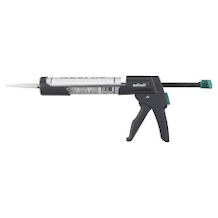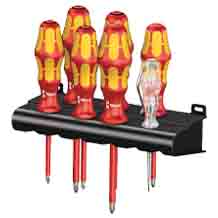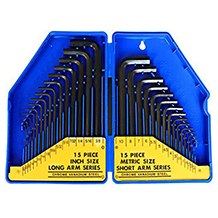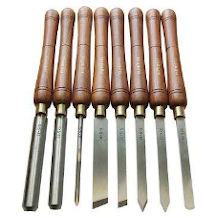Air compressor purchasing advice: how to choose the right product
- The most important facts in brief
- Compressors convert ambient air into compressed air to provide energy for various applications.
- Mini compressors can be taken along and are mainly used as air pumps.
- Large boilers are easier on the engine because it starts as soon as there is no more compressed air in it.
- While most whisper compressors are quieter than a normal conversation, the noise level of conventional compressors can be compared to circular saws.
- Oil and water separators and pressure reducers are essential for painting jobs.
Powerful all-rounder
Tasks such as manually inflating tyres or air mattresses, cleaning nooks and crannies or painting large surfaces are not only time-consuming, but also tax one’s strength. To make these unpleasant activities more pleasant, there is a simple aid: compressed air. With compressors that provide the necessary air flow, all this is done quickly and easily. They also supply energy to power various tools. This makes air compressors versatile helpers in the home and workshop.
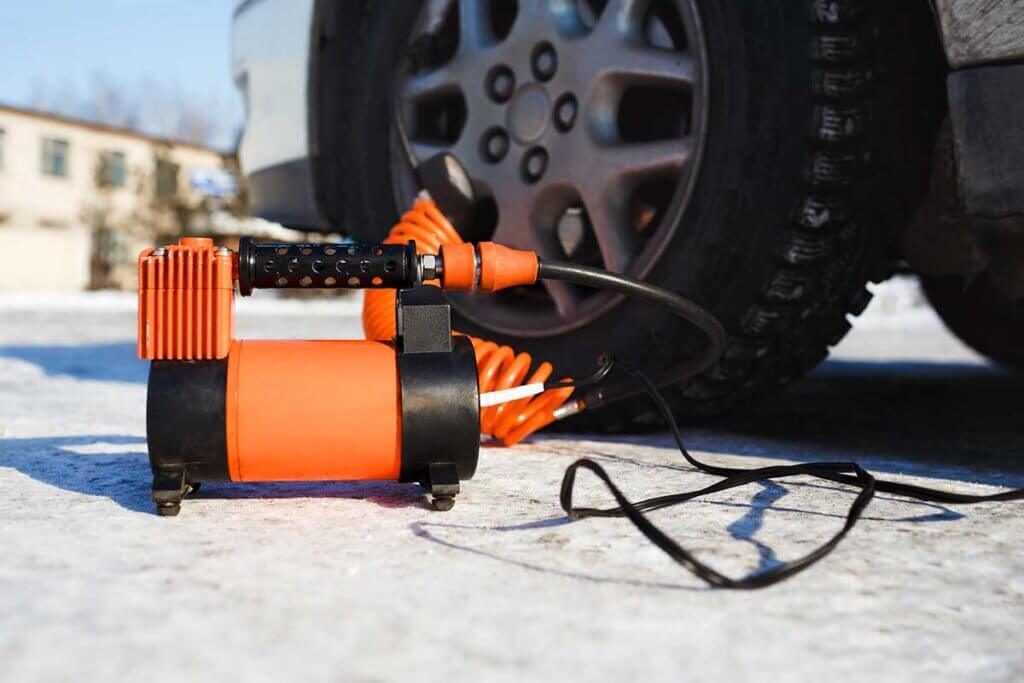
Compressors and their use
Even compact air compressors can be used to inflate vehicle tyres, including those of bicycles, cars and motorbikes. Inflating balls, paddling pools and air mattresses is also feasible.
For cleaning work
It is also possible to clean tools, workpieces or the entire workshop. With a compressor and a blow-out gun, users can blow the dirt out of the furthest corners. Special cleaning guns can be used for cleaning surfaces indoors or in cars.
For pneumatic tools
A large field of application is the operation of various pneumatic tools. They are often more durable than their electric counterparts. Typical pressure tools include random orbital sanders and impact wrenches. With an impact wrench, users can not only loosen nails and nuts from any material, but also change wheels or glow plugs on cars. Furthermore, pneumatic tackers and nailers make it possible to fasten wooden skirting boards or upholstery, for example. Chisel work can also be carried out.
For sandblasting
Sandblasting with a compressor is ideal for removing rust or smoothing workpieces and preparing them for painting. It uses grains of sand that bounce against the surface of the workpiece at high speed.
For painting
Different paint spray guns are used for painting large and small surfaces. These are used, for example, to paint cars or walls. For detailed work, there are small airbrush guns that can be used in model making or even for cake decoration and nail design.
Compressors and their designs
Air compressors come in different sizes, shapes and power ratings. They all draw in air, compress it inside and pass it on to the mounted attachments or tools via the compressed air connection. Piston and screw compressors are the most common types of air compressors for the home and craft sector.
Piston compressor
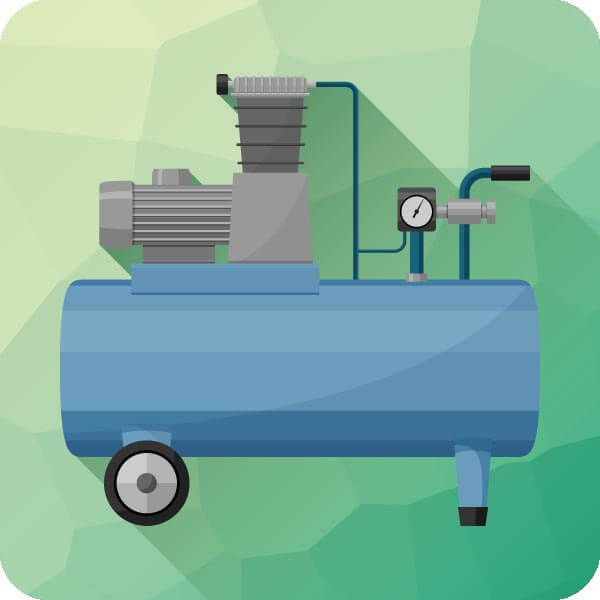
Piston compressors are the most common models in the hobby and craft sector. There are compact portable models as well as large and heavy workshop compressors. They are equipped with a cylinder in which there is at least one piston. As soon as the compressor is switched on, the piston starts to move: When it retracts, an inlet valve opens and lets air in. The air is compressed in the closed cylinder and then discharged as compressed air via the outlet valve.
Screw compressor
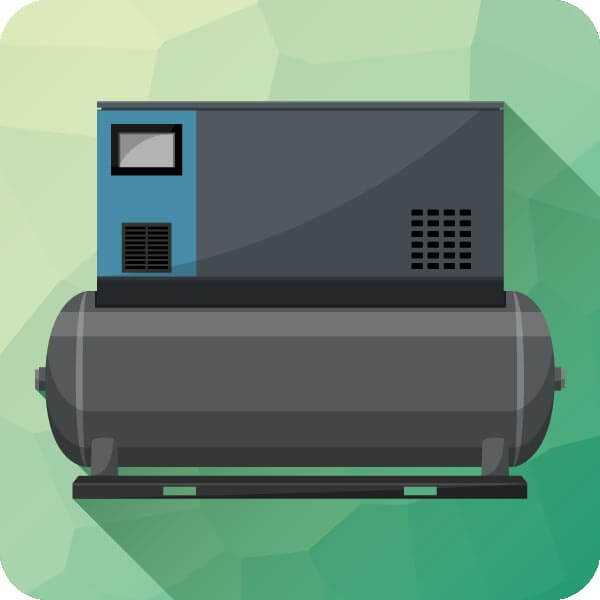
A screw compressor is a rotary compressor. It has at least two counter-rotating rotors inside the screw-shaped housing, which are profiled like threads. These fit into each other like cogwheels. The air moves from the intake opening through the cavities between the rotating rotors and passes the discharge side in the form of compressed air. Screw compressors are quieter than piston compressors and have a low pressure loss of less than 0.2 per cent.
What matters when buying
The choice of the ideal compressor depends on the area of application. If you only need a tool in case of car tyre punctures, you need a handy mini compressor that can be operated by battery or cigarette lighter instead of a large and heavy workshop compressor. The air output of mini compressors, on the other hand, is not sufficient to operate air tools.
Oil-lubricated or oil-free?
If you want to buy a compressor, you have the choice between oil-lubricated and oil-free models. Oil-free compressors require less maintenance than lubricated models because there is no need to change the oil. Oil cannot leak from the unit, nor is there any oil residue in the compressed air. These versions are ideal for varnishing and painting with a paint spray gun.
However, since no oil is used, there is a lot of friction during use, which means that the compressor heats up quickly on the one hand and is susceptible to wear on the other. Due to the heat generated, continuous operation is not possible. Longer work is interrupted by cooling pauses.
Oil-lubricated compressors can be in continuous operation. Thanks to the lubrication, there is less friction, so they do not get as warm as oil-free versions. In addition, material wear is not accelerated without the friction. Therefore, oil-lubricated compressors have a particularly long service life. They are well suited for use with pneumatic tools such as screwdrivers and sandblasters.
However, it is necessary to change the oil regularly, which causes follow-up costs in addition to the workload. Furthermore, they are not suitable for applications where the compressed air must be completely oil-free.
Equipment
Pressure gauges are an essential part of compressors. They are mechanical or digital gauges for measuring the pressure in the compressor. Keeping an eye on the pressure gauge is useful for all applications that require precise pressure.
To regulate the working pressure, a pressure reducer is used. This allows users to adjust the pressure to the connected tool. In addition, a pressure reducer helps to create a constant air pressure. For work with paint spray guns, especially for detail work, constant pressure is essential. Pressure reducers are often already fitted to the compressor.
If you want to paint a car or clean surfaces, you need compressed air that is free of oil or water. Air contaminated with oil can pollute the areas to be cleaned or cause colour defects. For oil-lubricated compressors, an oil separator is therefore indispensable. When working with air tools, however, oil residues in the air are not a problem. Oil-free compressors do not require an oil separator, only a water separator, which prevents the condensed water from entering the air stream and coming into contact with the paint. Oiled versions require both a water and an oil separator for cleaning and painting work.
The compressor is not enough for inflating tyres, balls and paddling pools or for painting and cleaning. Just as you connect compressed air tools to the compressed air hose, you also need suitable attachments for these applications. For cleaning surfaces and hard-to-reach corners, there are cleaning and blow-out guns in various lengths and with straight or curved nozzles. There is also a wide range of nozzles for paint spray guns for painting different surfaces.
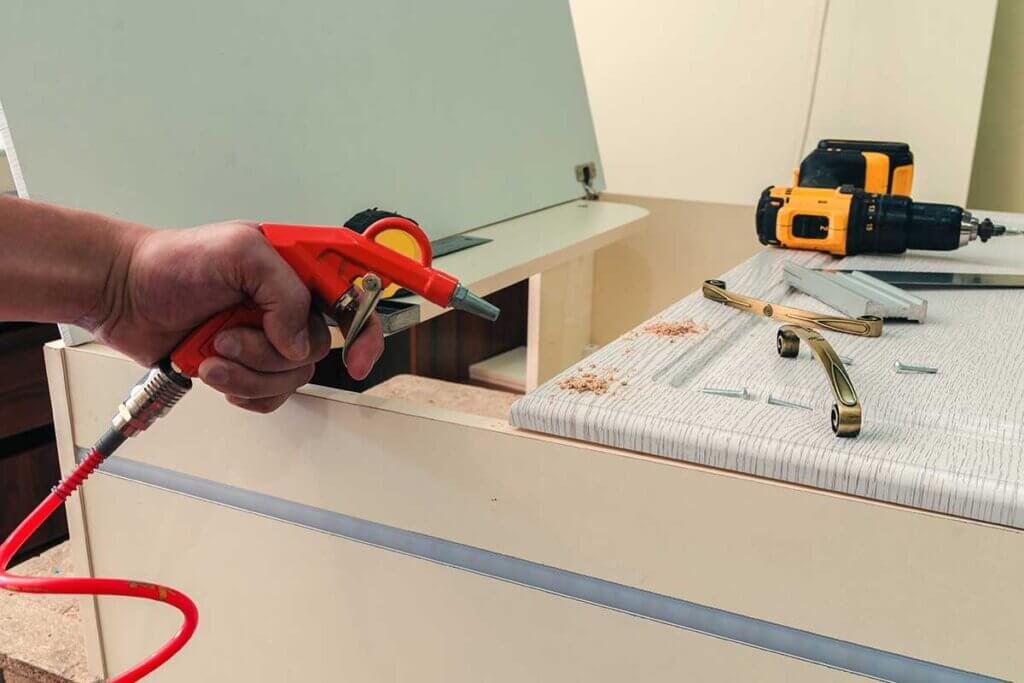
Some compressors have more than one compressed air connection to be able to operate at least two tools simultaneously. This is particularly practical in the home and craft sector: with a compressed air tool and a blow-out gun, for example, the workpiece and work area remain clean.
Intake and output power
The intake capacity is the volume of air that a compressor draws in within one minute. The maximum intake rate affects the amount of compressed air the unit can produce. The more air is sucked in, the more material can be compressed and then discharged. However, this value is not suitable for determining the actual performance of compressors. Instead, it is advisable to look at the output line, i.e. the amount of air that the unit ejects in compressed form. This is always lower than the intake volume. The higher the pressure, the higher the loss usually is.
If you want to connect an air tool to the compressor, you should pay attention to the consumption value of the tool. This must be lower than the output of the compressor, otherwise the tool cannot be used.
Which pressure is necessary for which tasks?
Many air tools require an approximate working pressure of six to ten bar. This corresponds roughly to the average pressure of compressors in the private sector. Commercial models sometimes have values of up to 20 bar. Some mini and compact compressors have a maximum pressure of less than 6 bar, while others work at up to 10 bar. To inflate bicycle tyres, balls or mattresses, values below 6 are perfectly adequate. However, as soon as an impact wrench with a consumption of 6.5 bar or an air nailer with up to 8.5 bar is to do its job, values of up to 10 bar are recommended. If a pressure reducer is available, a 10-bar compressor can also power a paint spray gun that only needs 2.5 bar, for example.
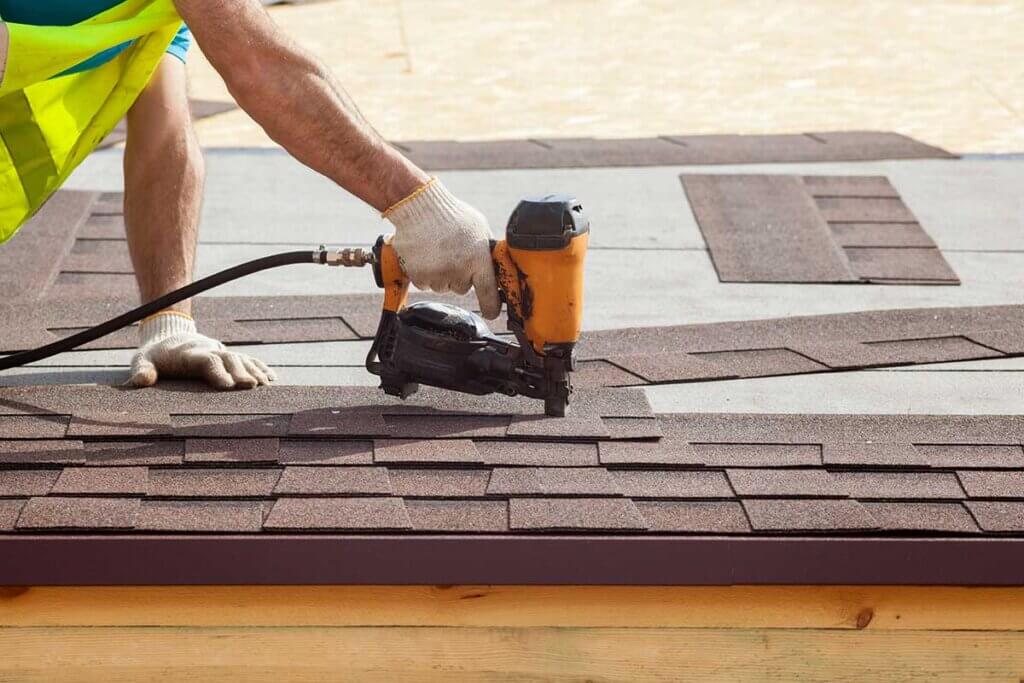
Tank size and total weight
With the exception of mini and compact compressors, most types have a tank or vessel. Part of the compressed air remains in the tank during operation: the compressors suck in the air, but do not expel all of it again immediately. Since part of the air pressure always remains in the tank, work can be carried out without delay.
Boilers with a large capacity are more gentle on the motor than compact designs. This is because the engine always starts up and compresses air when the tank is empty. The higher the volume, the less often the engine has to work.
The size of the tank contributes considerably to the total weight of the compressor. Models with a 50-litre tank sometimes weigh 20 kilograms, while 80-litre tanks can even come to more than 50 kilograms. A large tank and high pressure usually go hand in hand. The more pressure the tank has to withstand, the thicker and more resistant the walls have to be. Compressors without a tank, on the other hand, weigh very little, often hardly more than three kilograms.
When choosing the right size, it is advisable to consider the application. If the compressor is mainly used for pumping up, a small tank or a device without a tank is perfectly sufficient. For long and frequent use in the workshop, a tank with a capacity of more than 50 litres is quite sensible. In the commercial sector, tanks with a minimum volume of 100 litres are not uncommon.
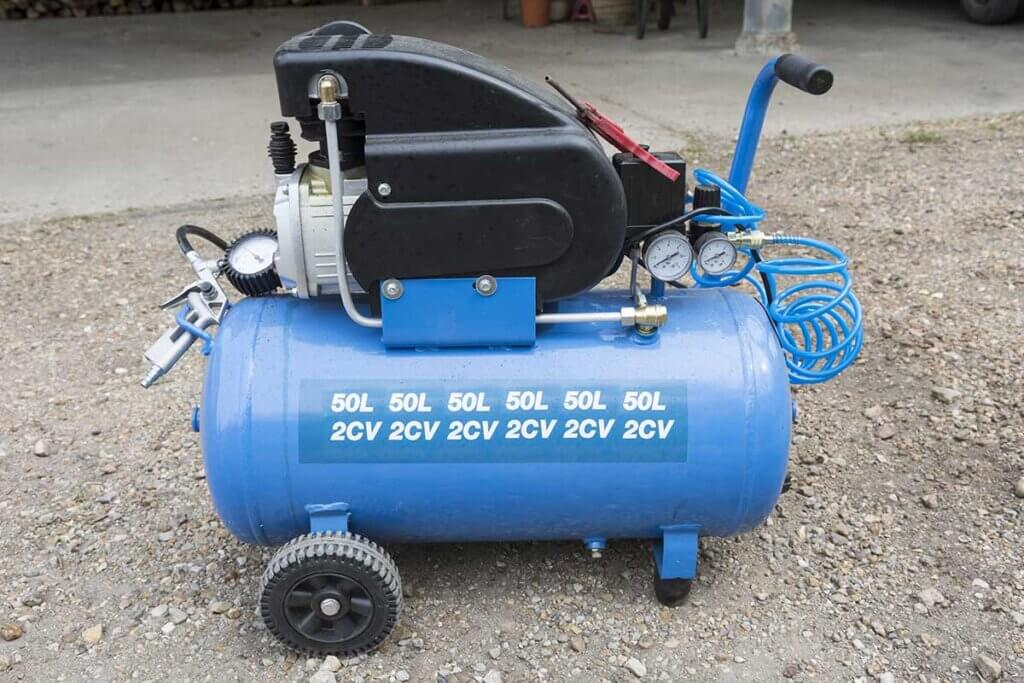
Volume
Many compressors, especially those for use in the workshop, operate at a volume of up to 100 decibels. The Sheppach HC43DC compressor, for example, has a noise level of 97 decibels and is thus almost as loud as a circular saw or a club. To protect one’s hearing, good hearing protection is recommended. Anyone who wants to do without can take a look at so-called whisper compressors. These are usually more expensive than equivalent loud compressors, but the noise level is less than 75 decibels. The whisper compressors from Implotex have a volume of 48 to 65 decibels, depending on the boiler size and wattage. This makes most models quieter than a normal conversation (60 decibels).
Drive type
The drive type of compressors depends on the size and the required power level. So-called mini compressors usually receive power either via a 12-volt plug or an integrated rechargeable battery. With a 12-volt plug, they can be connected to the car’s cigarette lighter, for example, to inflate the tyres after a breakdown. Battery-operated mini compressors can even be taken to the beach to supply air to swimming tyres or beach balls, for example.
For other applications in the private sector, such as starting up pneumatic tools, a larger compressor that runs on 230-volt household electricity is needed. These are usually machines with a 6- to 50-litre boiler and a working pressure of up to 10 bar. These all-rounders are well-suited to the garage at home or the hobby workshop. In commercial use, particularly powerful compressors with a pressure of more than 10 bar and a boiler volume of over 100 litres are often required. To operate these devices, 400-volt high-voltage current is required.
Is a special compressor required for airbrushes?
In addition to paint spray guns for varnishing or painting large areas, airbrush guns are an option for small areas and the depiction of fine details. Special airbrush compressors exist for these. These are oil-free compressors with a working pressure of less than 6.0 bar. Since airbrush guns usually only need 1.5 to 2.2 bar and the air pressure supply must be constant, a pressure reducer is essential. Ideally, the pressure can be adjusted very finely to suit each airbrush gun. Furthermore, suitable compressors have a water cut-off and a 1/8-inch thread on which the gun fits.
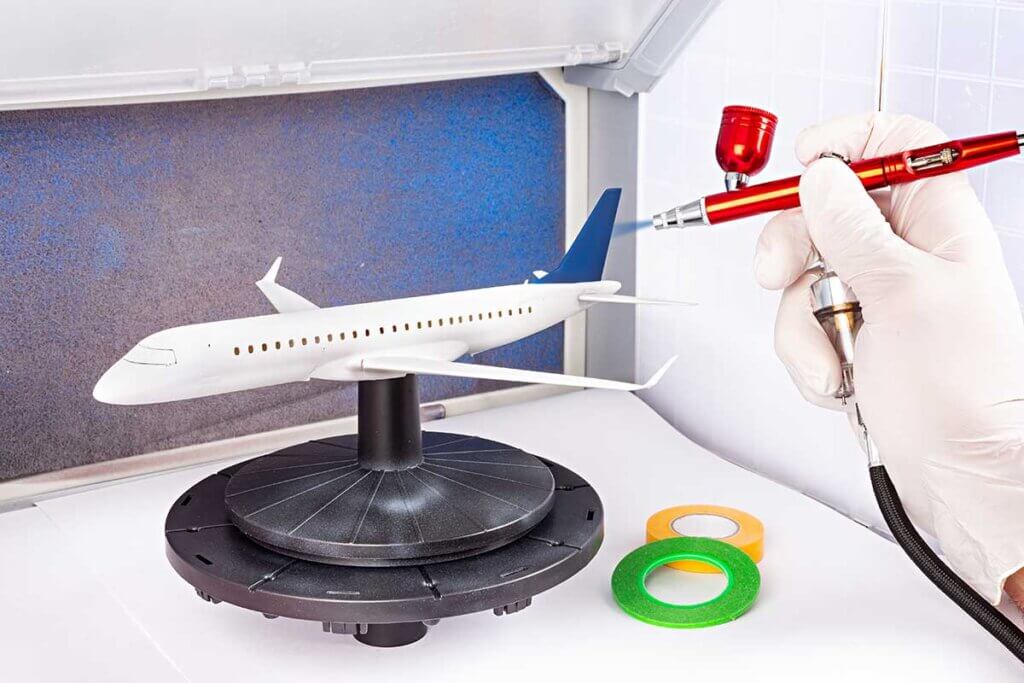
Conventional oil-free compressors can also have these properties. An inexpensive adapter is even available for the thread. However, they are considerably louder than airbrush compressors, whose noise level is comparable to the quietest whispering compressors so as not to disturb the artists’ concentration. For some special applications of the airbrush technique, such as detail painting in model making, nail art or cake decoration, a small compressor is important. Mini compressors may have the right dimensions, but they cannot be equipped with all the necessary components.
If you only need the compressor for airbrushing, a specially designed unit is a better choice. If airbrushing is one of several activities you want to perform with the compressor, a whisper compressor that is suitable for airbrushing makes sense. If there is no product that meets all the desired characteristics, two compressors are necessary.

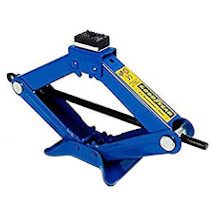

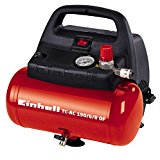
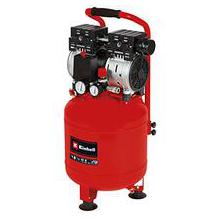
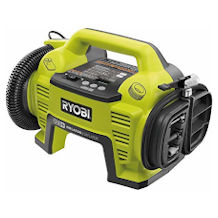
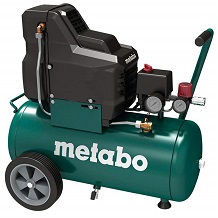
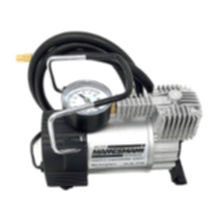
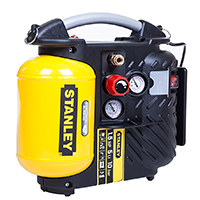
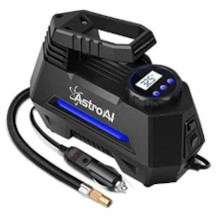
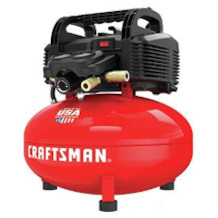
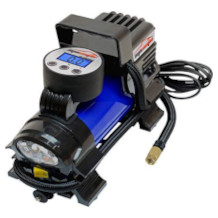
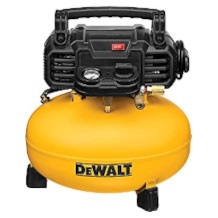
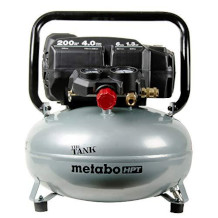
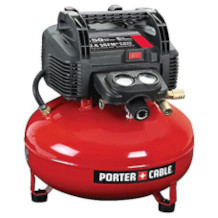
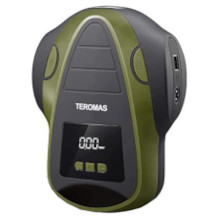

 2,051 reviews
2,051 reviews

